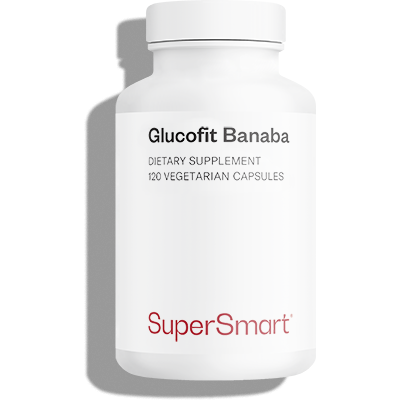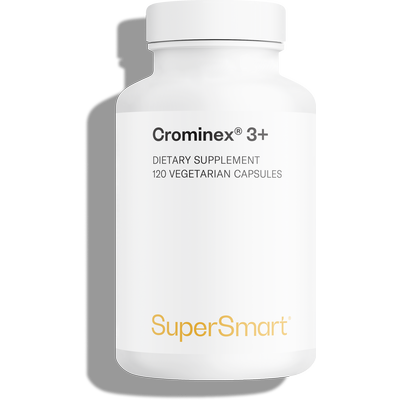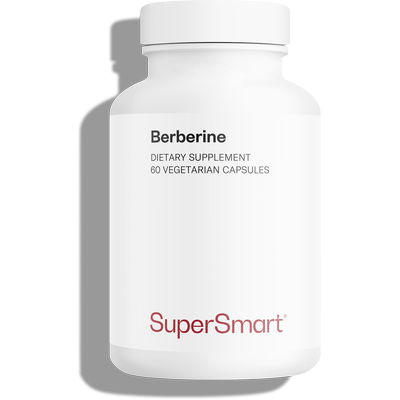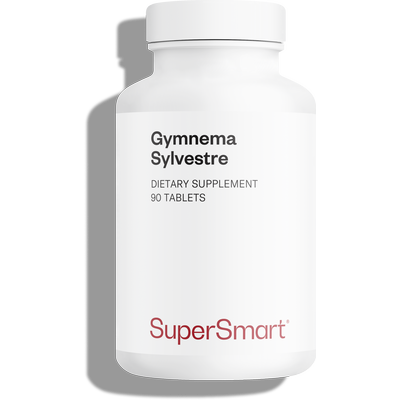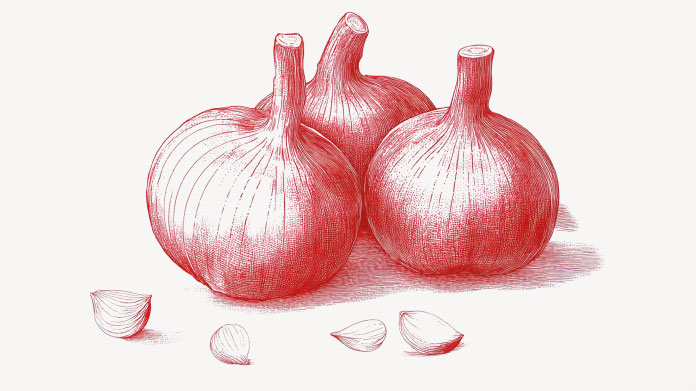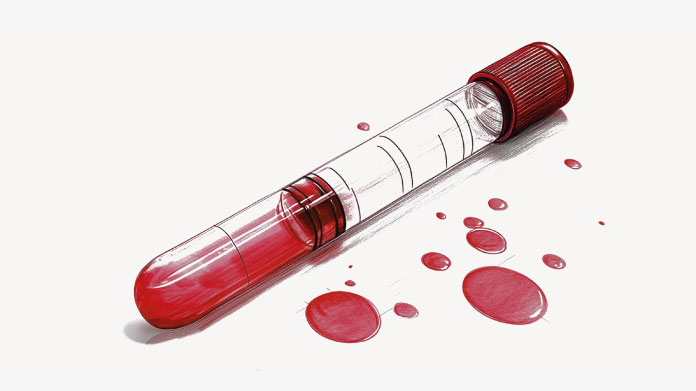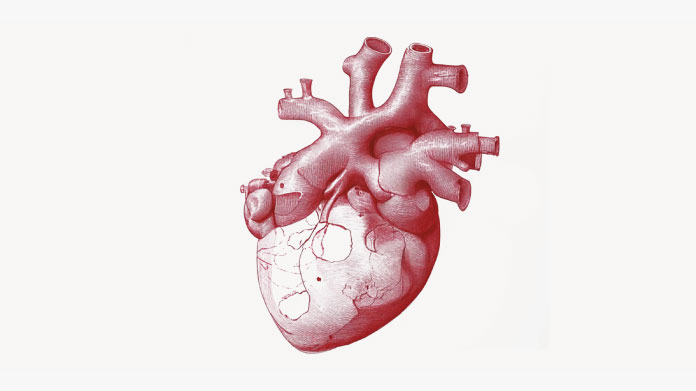Insulin resistance: definition, symptoms and natural treatments
Insulin resistance is a silent condition that can cause serious complications. Discover how to identify it.

Insulin resistance: definition
Insulin resistance is when the body’s cells stop responding properly to insulin (1).
Secreted by the pancreas, or more specifically beta cells of the islets of Langerhans, this hormone plays a major role in regulating glycaemia. Like a key turning in a lock, it binds to specific receptors on cell membranes, and directs fatty tissue, muscles and the liver to take in glucose (2). At the same time, it inhibits the depletion of glycogen, the body’s stored form of glucose.
In insulin resistance, cells gradually become less sensitive to the effects of insulin. At first, the pancreas redoubles its efforts to provide more insulin in order to ‘force’ sugar to penetrate cells: this is called compensatory hyperinsulinemia (3).
But over time, this boost in insulin production is no longer enough: the sugar remains in the blood, causing an increase in fasting blood sugar levels. When this reaches between 1.10 and 1.25, it is referred to as prediabetes (4) and once it exceeds this figure, the diagnosis moves towards type 2 diabetes (5).
Insulin resistance: symptoms
All the time it is not producing a marked rise in glycaemia, insulin resistance remains undetected and causes few symptoms.
However, the pancreatic overactivity it triggers often leads to metabolic abnormalities, such as hepatic steatosis (fatty liver) (the build-up of fat in the liver responsible for dyslipidaemia) (6).
Insulin resistance is also widely associated with metabolic syndrome (7). Affecting 40% of Americans over 50, this manifests in increased waist circumference and at least two of the following four problems: hypertension, excessively high blood triglycerides, low levels of ‘good’ HDL cholesterol, hyperglycaemia. Metabolic syndrome is a major risk factor for cardiovascular disease and diabetes, as well as kidney and liver disease.
Certain uncharacteristic blood markers sometimes suggest insulin resistance, such as an increase in gamma-glutamyl transferase, C-reactive protein (CRP) or ferritin (8).
Insulin resistance: causes
Insulin resistance and obesity
There is a strong interrelationship between insulin resistance and excess weight. Several studies have found increased production of adipokines by adipose cells (including TNF-α and IL-6) in obese subjects, which may interfere with insulin signalling and maintain low-grade inflammation, paving the way for insulin resistance (9). They have also noted abnormal infiltration of fatty tissue by macrophages.
Insulin resistance and PCOS
Polycystic ovary syndrome (PCOS) leads to androgen hypersecretion by the ovaries which encourages the development of adiposity. It thus predisposes to insulin resistance and metabolic syndrome, especially past the age of 50 (10).
Other causes of insulin resistance
Other known causes of insulin resistance include:
- an unhealthy lifestyle (physical inactivity, poor diet, smoking …) (11);
- gestational diabetes during pregnancy (12);
- certain viral infections such as HIV or hepatitis C (13);
- treatment with steroids (steroid-induced diabetes) (14);
- intense physical stress (a stay in intensive care for example) (15).
Insulin resistance and HOMA
Measured by a blood test, the HOMA (HOmeostasis Model Assessment) index can flag up insulin resistance even when blood sugar is normal. This tool is of real benefit in that it allows lifestyle/dietary measures or treatment to be introduced before the next stage of insulin resistant diabetes is reached.
The calculation is based on a mathematical model involving fasting blood glucose and insulin concentrations. A HOMA index of more than 2.4 is normally indicative of insulin resistance (16). The result must, however, be interpreted taking the patient’s clinical context into account.
Insulin resistance and weight loss
Insulin resistance can complicate efforts to lose weight. The sharp increase in insulin levels promotes the conversion of sugar into fat and its storage in adipose tissue – which further boosts insulin resistance, thus creating a vicious circle.
However, a reduction in fat mass in overweight individuals appears to stem the development of the disease by lowering lipotoxicity (17). Here are some tips that can help:
- review your eating habits, limiting foods that have a high glycaemic index (GI) (soft drinks, pastries, refined cereals…) and/or contain saturated fatty acids (butter, cooked meats, red meat …) (18);
- adopt the Mediterranean diet (high in fibre, vitamins and polyphenols) which has been shown to protect against insulin resistance and type 2 diabetes (19);
- boost your intake of oily fish and omega 3-rich plant oils (flax, rapeseed …) (20);
- engage in regular, moderate exercise (at least 150 minutes a week) (21).
Insulin resistance: treatments and natural aids
When lifestyle changes prove to be insufficient, therapeutic management is based on oral diabetes treatments.
Biguanides are a group of diabetes medications usually prescribed as a first-line treatment (22). They can be used with GLP1 analogues and/or SGLT2 inhibitors in combination therapy. Insulin injections are only used as a last resort. Only your GP or diabetes specialist can assess whether they should be used and judge how effective they are: medical supervision is therefore essential.
At the same time, certain dietary supplements can provide invaluable support in the context of insulin resistance. As they may interfere with your regular treatment, we’d advise you to consult a health professional before starting any supplementation.
Chromium helps maintain normal blood glucose and metabolism of macronutrients (protein, fats and carbohydrates). Several scientific papers have underlined its pivotal role in glucose homeostasis and its ability to optimise the effects of insulin (by modulating, in particular, the number and form of insulin receptors) (23). In addition, studies have observed chromium deficiency in type 2 diabetics (24).
Present in barberry, amongst others, berberine (highly concentrated in the supplement Berberine, a pure extract standardised to 97% berberine, the highest percentage on the market) is an alkaloid which has been studied to good effect in insulin-resistant subjects with metabolic syndrome. Research has focused, in particular, on measuring its impact on glycaemia and the inflammatory response (25).
A long time ingredient in the Asian pharmacopoeia, banaba (Lagestroemia speciosa) helps control blood glucose. Its main active ingredient is corosolic acid, sometimes referred to as ‘green insulin’ because of its effect on insulin sensitivity and secretion (the supplement Glucofit is standardised to 18% corosolic acid for maximum efficacy) (26).
Listed for more than 2000 years among Ayurvedic medicine’s blood sugar-lowering plants, the leaves of Gymnema sylvestre are able to support glucose metabolism because of their gymnemic acid content (Gymnema sylvestre is therefore standardised to 75% gymnemic acids). One study has reported their effects on individuals with impaired glucose tolerance, particularly in terms of blood glucose control, and insulin secretion and sensitivity (27).
SUPERSMART ADVICE
References
- Freeman AM, Pennings N. Insulin Resistance. [Updated 2022 Sep 20]. In: StatPearls [Internet]. Treasure Island (FL): StatPearls Publishing; 2023 Jan-. Available from: https://www.ncbi.nlm.nih.gov/books/NBK507839/
- Thota S, Akbar A. Insulin. [Updated 2022 Jul 12]. In: StatPearls [Internet]. Treasure Island (FL): StatPearls Publishing; 2023 Jan-. Available from: https://www.ncbi.nlm.nih.gov/books/NBK560688/
- Thomas DD, Corkey BE, Istfan NW, Apovian CM. Hyperinsulinemia: An Early Indicator of Metabolic Dysfunction. J Endocr Soc. 2019 Jul 24;3(9):1727-1747. doi: 10.1210/js.2019-00065. PMID: 31528832; PMCID: PMC6735759.
- Alvarez S, Coffey R, Algotar AM. Prediabetes. [Updated 2022 Jul 18]. In: StatPearls [Internet]. Treasure Island (FL): StatPearls Publishing; 2023 Jan-. Available from: https://www.ncbi.nlm.nih.gov/books/NBK459332/
- Goyal R, Jialal I. Diabetes Mellitus Type 2. [Updated 2022 Jun 19]. In: StatPearls [Internet]. Treasure Island (FL): StatPearls Publishing; 2023 Jan-. Available from: https://www.ncbi.nlm.nih.gov/books/NBK513253/
- Bril F, Sninsky JJ, Baca AM, Superko HR, Portillo Sanchez P, Biernacki D, Maximos M, Lomonaco R, Orsak B, Suman A, Weber MH, McPhaul MJ, Cusi K. Hepatic Steatosis and Insulin Resistance, But Not Steatohepatitis, Promote Atherogenic Dyslipidemia in NAFLD. J Clin Endocrinol Metab. 2016 Feb;101(2):644-52. doi: 10.1210/jc.2015-3111. Epub 2015 Dec 16. PMID: 26672634.
- Swarup S, Goyal A, Grigorova Y, et al. Metabolic Syndrome. [Updated 2022 Oct 24]. In: StatPearls [Internet]. Treasure Island (FL): StatPearls Publishing; 2023 Jan-. Available from: https://www.ncbi.nlm.nih.gov/books/NBK459248/
- Zhao W, Tong J, Liu J, Liu J, Li J, Cao Y. The Dose-Response Relationship between Gamma-Glutamyl Transferase and Risk of Diabetes Mellitus Using Publicly Available Data: A Longitudinal Study in Japan. Int J Endocrinol. 2020 Feb 21;2020:5356498. doi: 10.1155/2020/5356498. PMID: 32215009; PMCID: PMC7054786.
- Doumatey AP, Lashley KS, Huang H, Zhou J, Chen G, Amoah A, Agyenim-Boateng K, Oli J, Fasanmade O, Adebamowo CA, Adeyemo AA, Rotimi CN. Relationships among obesity, inflammation, and insulin resistance in African Americans and West Africans. Obesity (Silver Spring). 2010 Mar;18(3):598-603. doi: 10.1038/oby.2009.322. Epub 2009 Oct 1. PMID: 19798069; PMCID: PMC4151268.
- Amisi CA. Markers of insulin resistance in Polycystic ovary syndrome women: An update. World J Diabetes. 2022 Mar 15;13(3):129-149. doi: 10.4239/wjd.v13.i3.129. PMID: 35432749; PMCID: PMC8984569.
- Yaribeygi H, Maleki M, Sathyapalan T, Jamialahmadi T, Sahebkar A. Pathophysiology of Physical Inactivity-Dependent Insulin Resistance: A Theoretical Mechanistic Review Emphasizing Clinical Evidence. J Diabetes Res. 2021 Oct 7;2021:7796727. doi: 10.1155/2021/7796727. PMID: 34660812; PMCID: PMC8516544.
- Quintanilla Rodriguez BS, Mahdy H. Gestational Diabetes. [Updated 2022 Sep 6]. In: StatPearls [Internet]. Treasure Island (FL): StatPearls Publishing; 2023 Jan-. Available from: https://www.ncbi.nlm.nih.gov/books/NBK545196/
- Pedro MN, Rocha GZ, Guadagnini D, Santos A, Magro DO, Assalin HB, Oliveira AG, Pedro RJ, Saad MJA. Insulin Resistance in HIV-Patients: Causes and Consequences. Front Endocrinol (Lausanne). 2018 Sep 5;9:514. doi: 10.3389/fendo.2018.00514. PMID: 30233499; PMCID: PMC6133958.
- Ferris HA, Kahn CR. New mechanisms of glucocorticoid-induced insulin resistance: make no bones about it. J Clin Invest. 2012 Nov;122(11):3854-7. doi: 10.1172/JCI66180. Epub 2012 Oct 24. PMID: 23093783; PMCID: PMC3484465.
- Vedantam D, Poman DS, Motwani L, Asif N, Patel A, Anne KK. Stress-Induced Hyperglycemia: Consequences and Management. 2022 Jul 10;14(7):e26714. doi: 10.7759/cureus.26714. PMID: 35959169; PMCID: PMC9360912.
- Diniz MFHS, Beleigoli AMR, Schmidt MI, Duncan BB, Ribeiro ALP, Vidigal PG, Benseñor IM, Lotufo PA, Santos IS, Griep RH, Barreto SM. Homeostasis model assessment of insulin resistance (HOMA-IR) and metabolic syndrome at baseline of a multicentric Brazilian cohort: ELSA-Brasil study. Cad Saude Publica. 2020 Sep 2;36(8):e00072120. doi: 10.1590/0102-311X00072120. PMID: 32901702.
- Clamp LD, Hume DJ, Lambert EV, Kroff J. Enhanced insulin sensitivity in successful, long-term weight loss maintainers compared with matched controls with no weight loss history. Nutr Diabetes. 2017 Jun 19;7(6):e282. doi: 10.1038/nutd.2017.31. PMID: 28628125; PMCID: PMC5519190.
- Radulian G, Rusu E, Dragomir A, Posea M. Metabolic effects of low glycaemic index diets. Nutr J. 2009 Jan 29;8:5. doi: 10.1186/1475-2891-8-5. PMID: 19178721; PMCID: PMC2654909.
- Milenkovic T, Bozhinovska N, Macut D, Bjekic-Macut J, Rahelic D, Velija Asimi Z, Burekovic A. Mediterranean Diet and Type 2 Diabetes Mellitus: A Perpetual Inspiration for the Scientific World. A Review. Nutrients. 2021 Apr 15;13(4):1307. doi: 10.3390/nu13041307. PMID: 33920947; PMCID: PMC8071242.
- Lepretti M, Martucciello S, Burgos Aceves MA, Putti R, Lionetti L. Omega-3 Fatty Acids and Insulin Resistance: Focus on the Regulation of Mitochondria and Endoplasmic Reticulum Stress. 2018 Mar 14;10(3):350. doi: 10.3390/nu10030350. PMID: 29538286; PMCID: PMC5872768.
- Venkatasamy VV, Pericherla S, Manthuruthil S, Mishra S, Hanno R. Effect of Physical activity on Insulin Resistance, Inflammation and Oxidative Stress in Diabetes Mellitus. J Clin Diagn Res. 2013 Aug;7(8):1764-6. doi: 10.7860/JCDR/2013/6518.3306. Epub 2013 Jul 17. PMID: 24086908; PMCID: PMC3782965.
- Herman R, Kravos NA, Jensterle M, Janež A, Dolžan V. Metformin and Insulin Resistance: A Review of the Underlying Mechanisms behind Changes in GLUT4-Mediated Glucose Transport. Int J Mol Sci. 2022 Jan 23;23(3):1264. doi: 10.3390/ijms23031264. PMID: 35163187; PMCID: PMC8836112.
- Racek J. Chrom jako biogenní prvek [Chromium as an essential element]. Cas Lek Cesk. 2003;142(6):335-9. Czech. PMID: 12924032.
- Havel PJ. A scientific review: the role of chromium in insulin resistance. Diabetes Educ. 2004;Suppl:2-14. PMID: 15208835.
- Cao C, Su M. Effects of berberine on glucose-lipid metabolism, inflammatory factors and insulin resistance in patients with metabolic syndrome. Exp Ther Med. 2019 Apr;17(4):3009-3014. doi: 10.3892/etm.2019.7295. Epub 2019 Feb 22. PMID: 30936971; PMCID: PMC6434235.
- López-Murillo LD, González-Ortiz M, Martínez-Abundis E, Cortez-Navarrete M, Pérez-Rubio KG. Effect of Banaba (Lagerstroemia speciosa) on Metabolic Syndrome, Insulin Sensitivity, and Insulin Secretion. J Med Food. 2022 Feb;25(2):177-182. doi: 10.1089/jmf.2021.0039. Epub 2021 Nov 2. PMID: 34726501.
- Gaytán Martínez LA, Sánchez-Ruiz LA, Zuñiga LY, González-Ortiz M, Martínez-Abundis E. Effect of Gymnema sylvestre Administration on Glycemic Control, Insulin Secretion, and Insulin Sensitivity in Patients with Impaired Glucose Tolerance. J Med Food. 2021 Jan;24(1):28-32. doi: 10.1089/jmf.2020.0024. Epub 2020 May 27. PMID: 32460589.
Keywords
66 Days
Fiables y Recomendables
Como siempre estáis siempre ofreciendo alternativas naturales a los diversos problemas de Salud con un buen despliegue de información y una variada gama de productos. Y os felicito por el servicio de entrega que hacéis ahora que supera con creces el de antes.
Mariano Navarro Sanchez
66 Days
produits innovants
produits innovants, avec une composition claire
véronique de sainte marie
66 Days
Ravie et Très Satisfaite de Ma Commande…
Ravie et Très Satisfaite de Ma Commande et de Mes Commandes Très Bons Produits
Brigitte D.
66 Days
Produits fiables
Produits fiables
jacqueline
66 Days
Tout est OK 👌
Tout est OK 👌
RICHARD Bertrand
66 Days
Bestelle das Produkt seit Jahren immer…
Bestelle das Produkt seit Jahren immer wieder ist echt super, Preis Leistung ist ok könnte noch ein bisschen billiger sein aber sonst ok
SONJA Hofbauer
67 Days
Commentaire
Excellent services
DIDDY Mohamed
67 Days
Livraison rapide
Livraison rapide
devouass
67 Days
Schnelle Lieferung
Schnelle Lieferung. Gute Begleitung der Lieferung
SCHARWAECHTER Hans Juergen
67 Days
Efficace rapidement
J’ai commencé à prendre les facteurs de croissance osseuse alors que j’étais en plein accès douloureux d’ostéoporose. Mon état s’est stabilisé en quelques jours puis les douleurs ont diminué régulièrement. Je pense continuer ce remède pendant quelques mois puis 1 gélule par jour et une pause etc..
Françoise Delfour
67 Days
Rapidité de livraison avec prestataire…
Rapidité de livraison avec prestataire fiable ! Toujours impeccable.
Virginie
67 Days
Siempre buenas experiencias y cada vez…
Siempre buenas experiencias y cada vez más rápidos los envíos
Elsje Fokkelman
67 Days
Livraison rapide et en parfait état
Livraison rapide et en parfait état. Jamais d'erreur.
WUILLEMIN Sylvie
67 Days
J'ai trouvé rapidement sur le site le…
J'ai trouvé rapidement sur le site le complément qui m'était nécessaire et la livraison a été très rapide. Merci.
Client
67 Days
Je recommande ces produits
Facilité pour passer les commandes. Délais de livraison tenus. Produits de qualité. Je suis cliente depuis longtemps et très satisfaite.
Alexandre PUBERT

